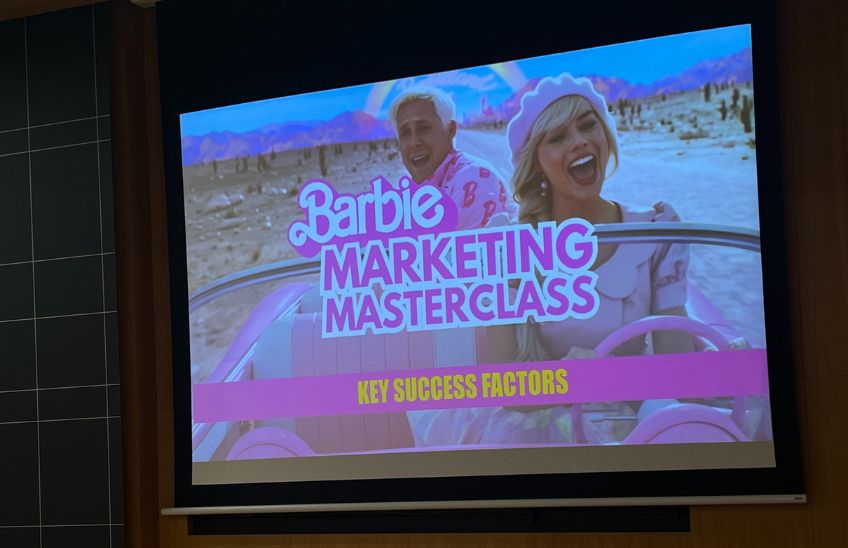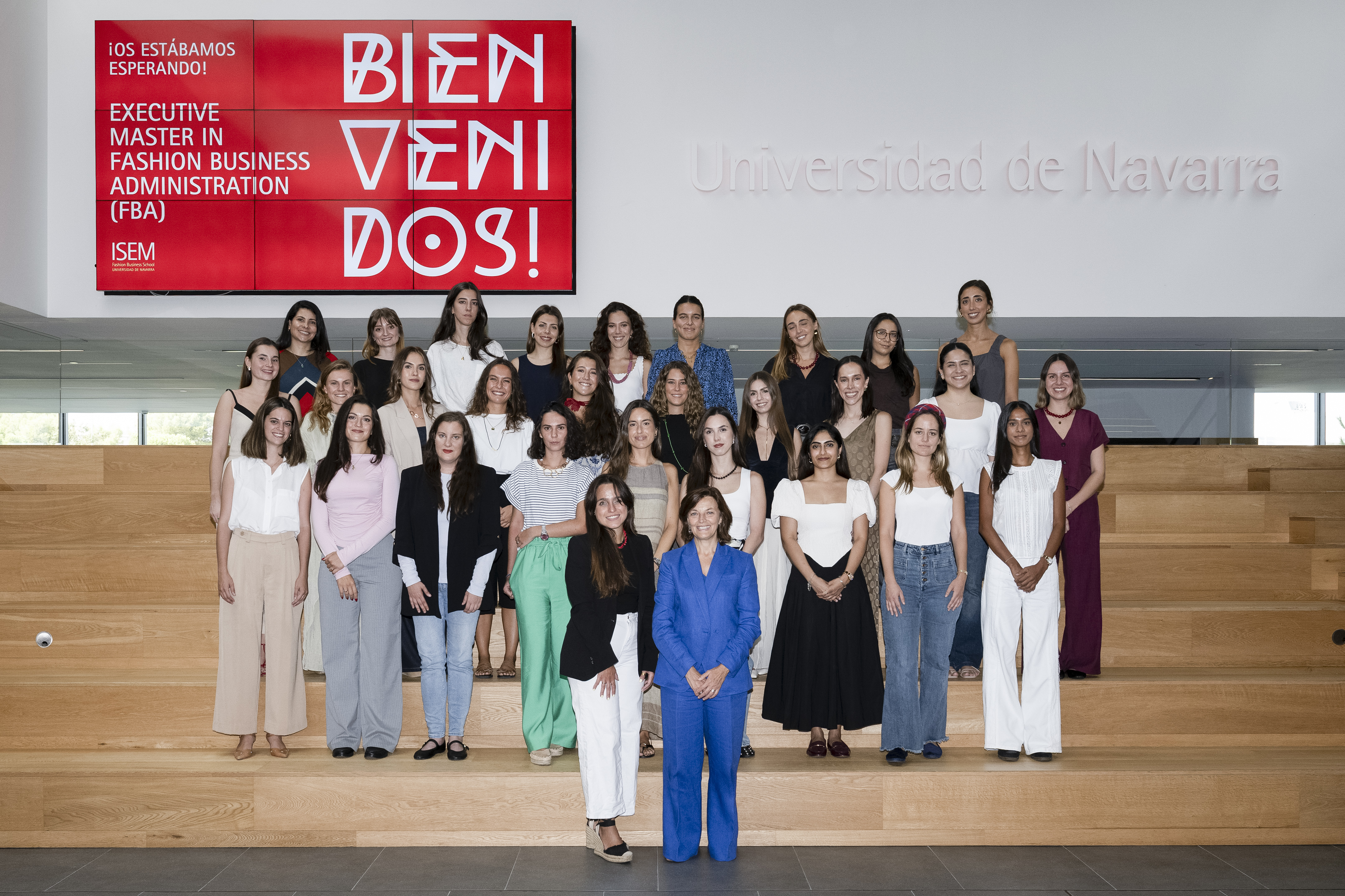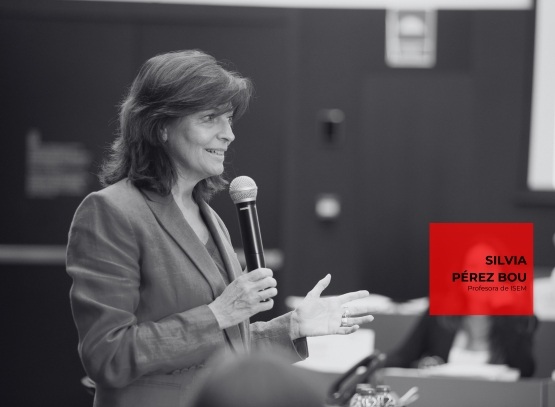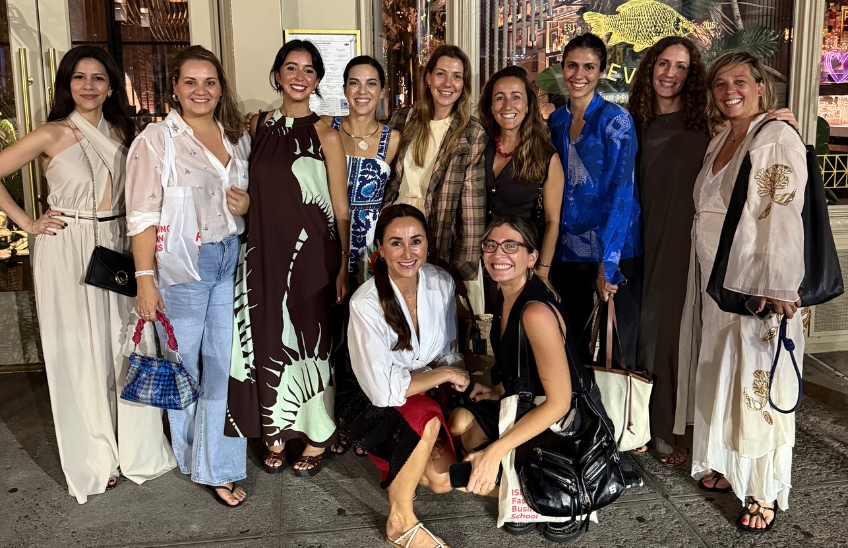Barbie isn't a doll, it's a full-blown cultural movement
Beatriz Bravo, former brand manager of Barbie-Mattel, participated in the last meeting alumni of ISEM, where she shared the 8 keys of the so-called Barbiecore phenomenon.

11 | 10 | 2023
On September 27th we celebrated a new edition of meeting Alumni ISEM, in which we had the opportunity to listen to Beatriz Bravo, former brand manager of Barbie-Mattel, for Southern Europe. Beatriz shared with a large conference room audience the keys to the so-called Barbiecore phenomenon, an unexpected trend that has managed to dye the windows of the world with the color pink. The discussion paper focused on eight ideas that, from the birth of the brand until today, have managed to increase Barbie's notoriety in the market.
- A consistent brand strategy. In the late 1950s, Ruth Handler came up with the doll she wanted for her daughter: a pretty toy and, at the same time, an educational tool . Since Mattel launched its doll on the market, Barbie has been adapting to the trends, surfing the falls in the times in which it was separating from that initial goal . And the brand's message is aimed at girls, encouraging them to project themselves into what they want to be in the future, without forgetting their mothers, the biggest influencers of the purchase, who have the final decision.
- The emotional connection. Barbie has been able to establish an emotional connection with her audience through narratives that inspire and help little girls identify with the character, knowing that every girl dreams of being a grown-up one day. Through her numerous professions, roles and styles, Barbie has been able to send a statement to her audience of empowerment and infinite possibilities.
- In addition, the brand has led an impeccable omnichannel strategy. Mattel has taken advantage of different media to develop creative campaigns and provide consumer attention, thus generating a community of loyal and enthusiastic followers.
- "Think global, act local".. It is estimated that Mattel has sold more than one billion Barbies in more than 150 countries around the world, a figure that reflects how well they have been able to adapt to different cultures. But it was not always like this... Between the 1970s and early 2000s, Mattel abandoned its storytelling around the doll to focus exclusively on product sales, which ended up generating a major reputational crisis and a drop in sales. Until 2015, when Mattel changed course, betting on a return to the origins of what was once considered an educational tool . It was then when Barbie put on a few pounds, abandoned makeup, got off the heels and began to have different skin tones, sizes, heights... even some disability. The campaign "you can be anything" had the goal to encourage all the girls in the world to see themselves reflected in that doll and, in that way, to accept, love and project themselves in their future. In 1968, at the height of the Civil Rights Movement, plenary session of the Executive Council , Midge was Barbie's pioneering African-American friend, and Mattel's strategy of returning to that outspoken origin has been rewarded by a boom in Barbie's sales and reputation, which has reached its peak with the release of the movie of Greta Gerwig. Therefore, it is safe to say that Barbie is not a doll but a full-fledged cultural movement.
- Visual identity. The iconic B in the Barbie logo is, for Beatriz Bravo, another of the brand's essential factors. The pink color is the essence of the doll and makes it recognizable wherever it goes.
- This year Barbie has gone a step further with the release of a new movie, this time not aimed at little girls but at those who played with the doll in their childhood. Greta Gerwig has made her film the highest grossing film in Warner's history, surpassing Harry Potter. Focusing on the film, the sixth idea Beatriz mentioned is Buzz and anticipation. A year before its release, promotion began, the release of the first trailer and interviews with the actors, generating great anticipation and attracting a wide audience. The role of social networks was core topic to create a publicity boom .
- Barbie is a brand with 98% awareness worldwide. A figure that may seem insurmountable, however, Barbie's engagement the movie has promoted has surpassed all limits. The audience had a level of commitment and loyalty to the brand that had never been reached before. One example is the virality of the famous "trends" on the TikTok platform: the fans themselves were the ones who posted videos on their personal accounts, preparing their pink looks to go to the cinema to see the film, thus giving an extra advertising that undoubtedly benefited the brand.
- The great partnerships. The Barbiecore didn't come about by chance, even if its effects have been far greater than expected. According to Time magazine, "the toy business partnered with a dizzying number of clothing brands, hair care companies and even pool float companies to print Barbie's favorite color on their products". Barbie started with 100 partnerships but, after her progressive fame, many more have joined Mattel's proposal , taking advantage of it; as well as these are the ones who have helped boost the franchise, increasing the level of knowledge of the brand and helping to triple its sales.
At final, there are many reasons why the barbiecore has burst into our lives with great force and has innovated the fashion industry. and, above all, they are the result of a branding strategy that Mattel has been implementing for 15 years. As Harper's Bazaar magazine put it, "the best orchestrated marketing campaign in the history of cinema".



